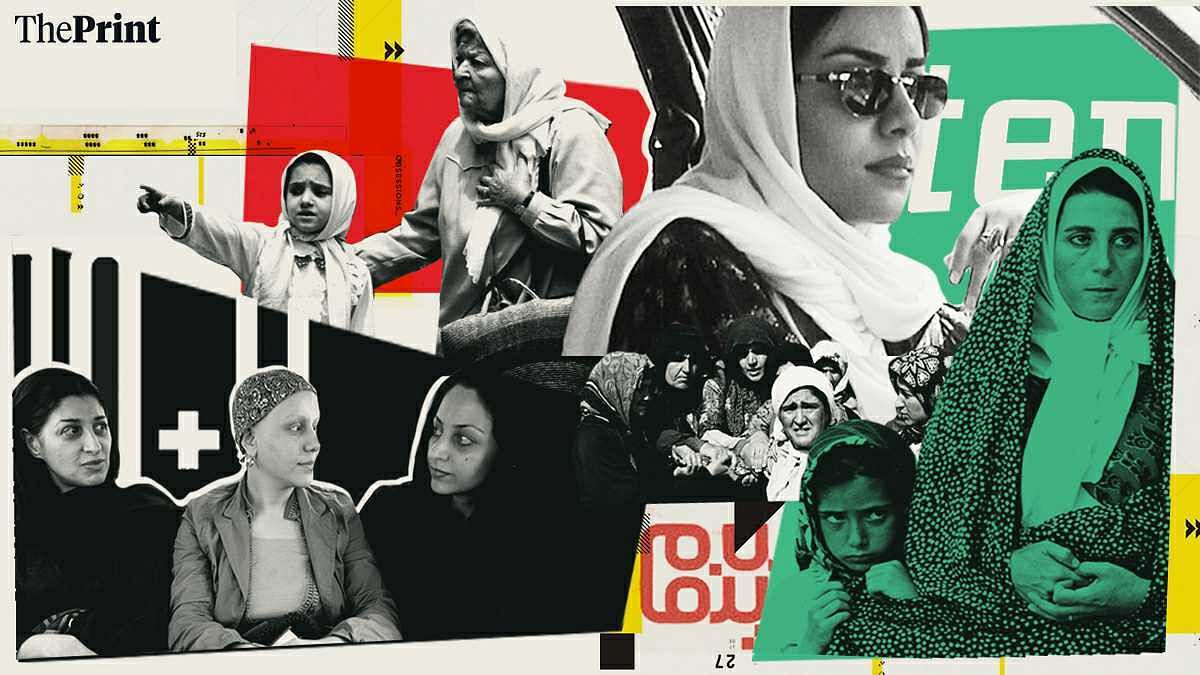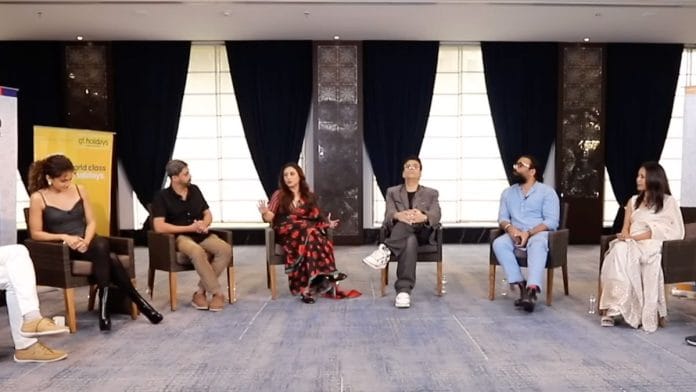New Delhi: Rani Mukerji is full of pride for Indian cinema. Correction: she is full of pride for India’s diversity, which she quickly applies to Indian cinema. Or at least that’s what her misguided ‘defence’ rests on. Kannada director Prithvi Konanur, during a roundtable, was simply praising the Iranian film industry for its superior content and suggested Indians watch their films. But Mukerji got ‘little offended” and went on a tirade about India’s diversity before summarising that “Indian cinema is the best”.
While which cinema is superior, or even ‘best’ for that matter, will always remain a matter of personal opinion and preference, to argue in defence of a creative medium by using your ‘nation’ as defence is hardly anything more than defending your hurt nationalist pride.
First things first, Konanur’s point regarding Iranian cinema’s superiority was based in terms of “ideas”. “For that, you have to go to the roots. You can’t go up and try to get those ideas in your mind. You have to go to the streets, get the ideas, get the people, get the talent and make it work,” he said. Mukerji was clearly unimpressed with his take, probably also because Konanur had earlier dismissed mainstream Bollywood films, the likes made by Karan Johar and starring her, as “mushy mushy” that don’t interest him. And so, she responded in a tone-deaf manner, completely missing his point about ideas and roots.
Even when she referred to a ‘rooted’ film, she cited Vidhu Vinod Chopra-directed 12th Fail, a recent release that revolves around a UPSC aspirant—the character is a poor, Brahmin man. This bubble in which commercial Bollywood cinema lives is exactly what Konanur was arguing about, something he says Iranian cinema values doesn’t suffer from.. And we definitely can’t count on mainstream Bollywood actors to burst this bubble. After all, their life depends on it. They are the stars of that universe.
Iranian cinema is certainly world class in its approach to storytelling, screenwriting and cinematography. The industry’s trajectory reflects a heritage of defiance and a subversive narrative, emerging in the face of challenging circumstances, serving as a pioneer in storytelling even today. So much so that in the early 1990s, the Federation of Indian Chambers of Commerce (FICCI) Report, discussing opportunities for the growing Indian Media and Entertainment sector, suggested that India should take inspiration from Iranian cinema to make a global impact.

Mukerji misses the point of cinematic influence and its transnational nature, which remains confined to discussions during the promotion of a film. Here’s why.
First, in Indian cinema, there’s a clear divide between the mainstream and indie segments, a distinction that doesn’t exist in Iranian filmmaking. This discrepancy is why a large section of Indian audience is not introduced to global cinema or perhaps considers ‘art’ films as boring or not entertaining enough.
Secondly, there is also a stark difference between contemporary Iranian cinema and Indian cinema. A look at how Iranian cinema caters to the ‘Women, Life and Freedom’ feminist movement despite the regime’s attempts to suppress it with censorship, bans, killings and arrests, is telling in itself. Paradoxically, Iranian cinema not only survived but thrived under these constraints. Their cinema is a tool for protest that the Iranian filmmakers are using wisely. Whereas Indian filmmakers have been functioning under a short-tempered censor board that has forced them to play safe.
Also read: Long before Mahsa Amini, Iranian cinema has fought hijab in small rebellions
There is indeed a lot to learn
In an interview, director Abbas Kiarostami compared Iranian filmmakers to creative architects who “might say that they built their best houses on a very difficult piece of land”.
From Abbas Kiarostami to Rakshan Bani-Etemad and Mania Akbari, or even Majid Majidi and Jafar Panahi, the creators have been railing unabashedly against the theocratic regime and its suppression of art, culture, and freedom.
On the other hand, the ‘mainstream’ cinema that Mukerji is so proud of has succumbed to sanitised narratives of macho men delivering reformist monologues (Pathaan or Jawan), or simplistic tales of hard work is enough to beat the system (12th Fail) while ignoring the privileges facilitating that success in the background, or simply made space for movies like Animal and Kabir Singh that glorify violence against women to thrive.
In the same roundtable, Johar called Animal his favourite film, in the presence of its director Sandeep Vanga Reddy. Talk about ideas, roots, being honest to art, and ‘basics of filmmaking’ that Konanur had in mind.
Mukerji referencing 12th Fail as an example while speaking of diversity is laughable. The characters were “brownfaced” to show their “middle class upbringing” and the actor, Vikrant Massey, had no problem portraying it too. Isn’t Mukerji validating Konanur’s point on what we can learn from Iranian cinema and its depiction of social realities?
A casual Google search will throw up results of the number of Bollywood films that have been “inspired” by world cinema. We clearly like to pick good stuff without crediting them. But that’s our onscreen culture. How about being honest in an intellectual discussion that would benefit the cinema lovers?
In 2018, when acclaimed Iranian director Majid Majidi was asked to comment on the difference between the two film industries, he said, “Iranian cinema is based on realities, real locations, social subjects and human values. Bollywood movies are all about box office collections which is important from the commercial side. In India, you (also) have social subjects and interesting stories. There is a very well balanced, new generation in India and if they get the right kind of support then that could be good for independent filmmakers in India. We can have new Satyajit Rays.”
I think this aligns with Konanur’s point when he simply says that he “requests” others to watch Iranian cinema—for the simple fact that there is a lot to learn from other cinema as well. It was not a dismissal or an attack on Indian cinema. Neither was this a competition. It was a discussion.
For once, mainstream Bollywood actors can choose to step away from the “couch” and learn to pass the mic in a discussion. One wonders what Mukerji would tell Ray if she read about his views on Indian cinema.
Here is what Satyajit Ray had to say about Indian Cinema (in 1992):
"I wasn't looking at the Indian films really for any kind of real edification or education. They were there, they had to be seen occasionally, but the real interest was in foreign films. And foreign films… https://t.co/JR9nkE2HhO pic.twitter.com/spqszAU2Xz
— DepressedBergman (@DannyDrinksWine) January 9, 2024
Views are personal.
(Edited by Prashant)






